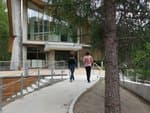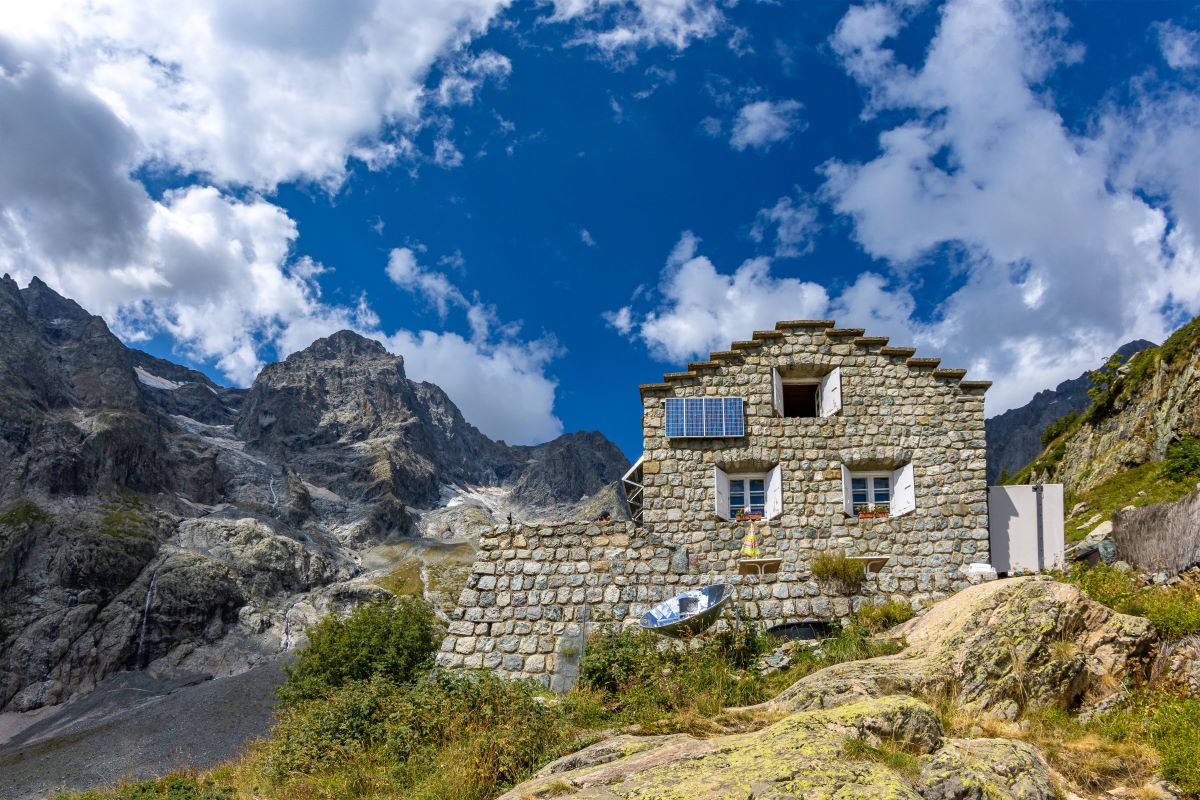
Bans Refuge
« In the month of June, it is frequent that patches of snow remain at the edge of the track leading to Bans Refuge. One day, wanting to photograph a chamois, a hiker injured himself on a boulder passing over a patch of snow. We had to alert the ambulance crew who had to come and get him with the helicopter. »
Blandine Delenatte and Jean-Philippe Telmon, park rangers in Vallouise
Description
Take the track of the car park to the left.
- At the first crossroads, take the track to the right which is the only way to the Bans Refuge. It goes beside the Bans torrents on the left bank, firstly beside the water, and then an elevated path. In the sunshine, the path crosses a variety of environments, several streams and passes in front of a small pond, an ideal spot for a rest before entering a more mineral atmosphere. The route does not present any particular difficulties; only a short passage equipped with cables on a rocky shelf under the refuge. The cirque of high mountains and glaciers at the bottom of this splendid wild valley give a very « alpine » atmosphere to this easy hike.
- The descent follows the same path.
- Departure : Entre-les-Aygues, Vallouise
- Towns crossed : Vallouise-Pelvoux
Altimetric profile
Information desks
Vallouise Park house
, 05290 Vallouise
Information, documentation, models, exhibitions, screenings, product sales and works of the Park. Guided tours for school, reservation required. The new Park House opened in Vallouise since June 1, and offers visitors an interactive permanent exhibition inviting to explore the area and its heritage. A temporary exhibition space will allow a renewed offer. Finally, the device is completed by an audiovisual room to organize screenings and conferences Free admission. All animations of the Park are free unless otherwise stated.
Transport
Bus from Argentière-les-Ecrins to Vallouise. From Vallouise to Entre-les-Aygues, shuttle service must be reserved 36h in advance.
Access and parking
In Vallouise, take the direction to Puy Aillaud. In Villard, continue straight on to the road that crosses the hamlet to reach the car park at Entre les Aygues. NB. This little road is closed in Winter and can be open quite early in the Spring depending on the frequency of avalanches.
Parking :
Sensitive areas
Golden eagle
- Impacted practices:
- Aerial, , Vertical
- Sensitivity periods:
- JanFebMarAprMayJunJulAug
- Contact:
- Parc National des Écrins
Julien Charron
julien.charron@ecrins-parcnational.fr
16 points of interest
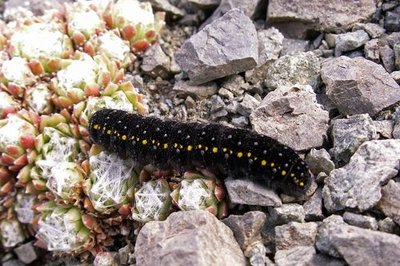
Chenille du grand apollon - Christophe Albert - PNE  Fauna
FaunaApollo
In Spring, a black velvet caterpillar spotted with yellow enjoys eating Mountain Houseleek and Sedum, succulent plants that are typical in the rocky dry areas in the mountains they are common in the Onde valley. A few weeks later, it is a big white translucent butterfly speckled with black spots and four red ocelli which comes out of its chrysalis. The male emerges first and waits patiently for the female. After mating, he leaves her a strange gift: a mating plug. A real chastity belt, this protein shell stops any further copulation for the female.
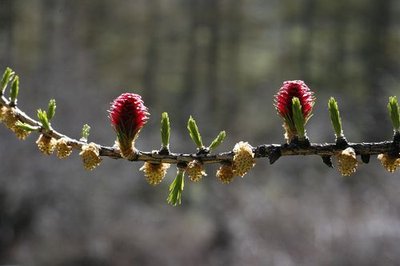
Mélèze (inflorescences mâles et femelles) - Bernard Nicollet - PNE  Flora
FloraEuropean Larch
Endowed with a rich pallet of colours depending on the seasons en, the soft fine needles of the Larch tree turn from tender green in the Spring to emerald green in the Summer then golden in the Autumn... When winter comes, they fall off and the majestic Larch tree seems to dry up. The only things that remain are the little round cones that the birds take apart in order to peck at the seeds. The flowers blossom at the same time as the appearance of the first soft in Spring: female flowers are small raspberry coloured cones and the male flowers are pale yellow catkins.
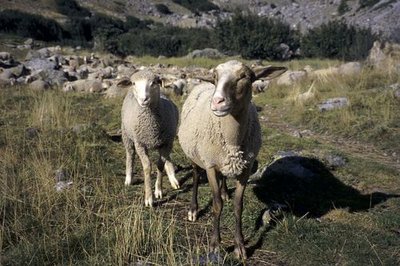
Pastoralisme au vallon des Bans - Joël Faure - PNE  Pastoralism
PastoralismFlocks in the Bans valley
Two flocks share the Bans valley. The first goes up early in the season, on the left bank above the track, and will graze in the prairies which overhand the refuge. The second grazes on the right bank of the valley, at the end of the summer grazing season. You can seem them from the track.

Rhododendron ferrugineux - Bernard Nicollet - PNE  Flora
FloraRhododendron ferrugineum
Every year, at the end of June and the beginning of July, the « rhodo » branches are crowned with pink and purple flowers, contrasting with their green leaves, the blue sky and the last white mounds of snow.. On the underneath side of their leaves are hidden tiny rust coloured glands which is why the rhododendron is called ferruginous The stiff, shiny, dark green leaves, persist throughout the Winter if the shrub is sheltered under a thick covering of snow.
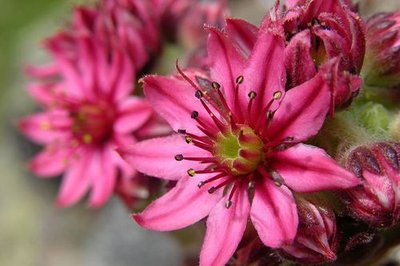
Fleurs de la joubarbe à toile d'araignée - Thierry Maillet - PNE  Flora
FloraCob web House Leek
On a dry substrate in the border of the track, thick flowers arranged in tight rosettes stick up towards the sky, a network of white hairs quite similar to the silk spun by the spider. At the heart of all this, a shaft exhibits several bright pink flowers opened like stars. To complete this incredible regularity of this composition, the stamens form a round eye shape at the centre of the flower... The Cob web House Leek and its little faithful shoots, create a real miniature rock garden which is very effective at collecting and storing water.
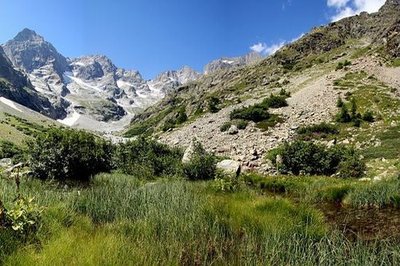
Paysage du vallon des Bans - Jean-Philippe Telmon - PNE  Fauna
FaunaCommon Frog
Robust, rounded muzzle a beautiful chocolate coloured temporal mask enhances its golden eyes; the Common Frog is the only one to occupy humid areas, pond and lakes at an altitude of more than 1000m. In the pond at Bans, it is the tadpoles that can be observed, gathered together at the edges. The speed of their growth is very variable depending on the altitude and climatic conditions. While in the plain, they can metamorphosize into young frogs three or four months later, here, the conditions are harsh and they spend a year in the water before becoming frogs.
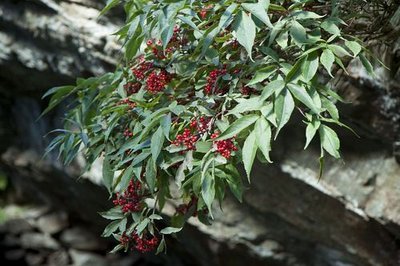
Sureau rouge - Cédric Dentant - PNE  Flora
FloraRed Elderberry
Beside the pond at Bans, feet anchored in the stone and head in the sun, the shrub grows in a bunch and bends, as if pulled down by the weight of its compound leaves and its abundant red clusters... The little fruits are greatly appreciated by Passerines who insure the dispersion of the seeds... Every part of the shrub is used for medicinal purposes: flowers and berries against colds, flu and bronchitis; infusion of the flowers against eye infections and dermatitis; bark against gout and nephritis; leaves and roots against burns, bruises and toothache.
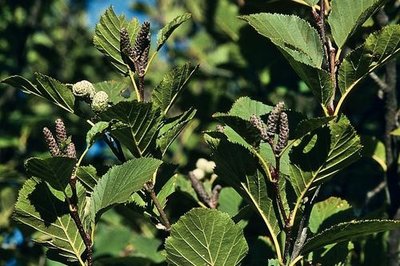
Aulne vert - Bernard Nicollet - PNE  Flora
FloraGreen Alder
This bushy shrub, in front and above the track, forms an inextricable thicket, which is a refuge for the birds and the chamois who come looking for shade and tranquility during the hottest moment of the day... It is a pioneer that is not afraid to implant itself on steep, poor terrains: its powerful roots enable it to cling on where everything else slides away. Its male catkins hang when they are mature, exposing their pale yellow flowers... The female catkins give characteristic fruits, a kind of small pine cone that starts off green then turns to brown, and they persist throughout the year.

Primevères hirsutes vues sur le vallon des Bans - Thierry Maillet - PNE  Flora
FloraStinking Primrose
To see the rocks around the refuge in Spring brightened with the pink colour of the Stinking Primroses is a real pleasure since the snow is only just letting the yellowed grass show through! If the startling corollas catch the eye its hairy aspect is striking. Only a meticulous observation of the stalks and flowers enables you to discover the many short stiff hairs tipped with glandular heads that make this plant sticky.
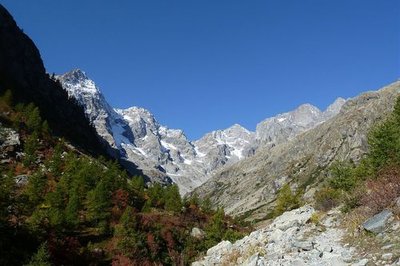
Le paysage du vallon des Bans - Blandine Delenatte - PNE  Top
TopAlpine atmosphere
The bottom of the Bans valley is enclosed by a cirque of high summits which give this family hike an alpine atmosphere. The Pic de Bonvoisin, Pic Jocelme, Pic des Aupillous and the Bans Summit seem to form a vertical barrier which can only crossed at the pas des Aupillous.
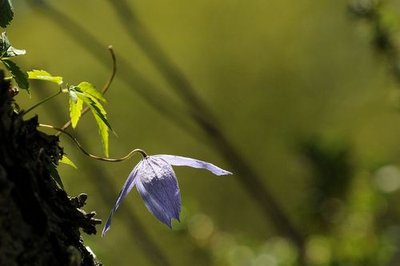
Clématite des Alpes - Mireille Coulon - PNE  Flora
FloraAlpine Clematis
At the beginning of summer, this vine lets its flexuous stem creep along the humid boulders that surround the refuge to present our eyes with its big, beautiful, pale blue flowers which hang above us in the emptiness. It only grows in the mountains, in the cool rocky woods where there are piles of mossy boulders and it benefit from the diffuse light, that floods these places to open its divided leaves and it’s pretty flowers.
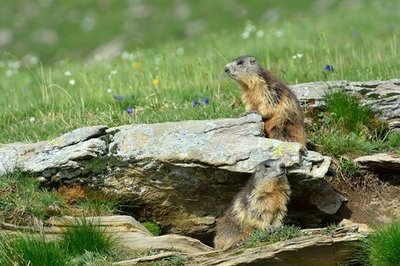
Marmottes près de leur terrier - Mireille Coulon - PNE  Fauna
FaunaMarmot
Around the refuge at Bans, the marmot watches the visitors as much as they watch it! Its main strategy against predators (Royal Eagle, Fox) consists of sheltering in its burrow... It lives in a family, composed of a couple of dominant adults and their subordinates from several successive litters... Grooming, games and fighting insure the cohesion of the group and respect within the hierarchy. Each animal participates in the delimitation of the territory By urinating, defecating or rubbing their cheeks on rocks at the frontiers in order to leave their scent... The marmot is a wild herbivore. If you feed it you will be encouraging it to adopt a comportment that is against its instinctive reactions des which ensure its protection and survival...
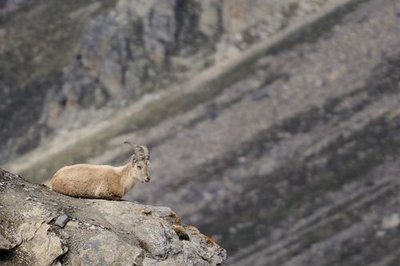
Bouquetin - jeune mâle - Mireille Coulon - PNE  Fauna
FaunaAlpine Ibex
In 1995, several Ibex were introduced in to the Champsaur. Among them, an etagne nicknamed Caresse who was seen in the Onde valley in 2009 and found dead in an avalanche in 2010. Since then observations of Ibex have multiplied in the valley and a small group seem to have settled there. Most often they are perched on the cliffs at altitude, and remain hardly visible. But from the Bans refuge, with a telescope, you can have the chance to observe them on the rocks.
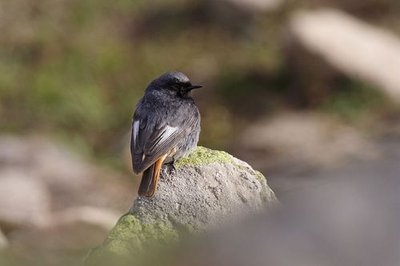
Rougequeue noir mâle - Jean-Philippe Telmon - PNE  Fauna
FaunaBlack Redstart
Mr. Black Restart has a grey skullcap and white mark on his wings, a red tail and rump. A common bird that is lovely and active, it loves the atmosphere in the rocks and hunts continually for insects in flight and on the ground. He emits brief cries of alarm bending his legs, perched on a rock or a stone wall. His chatty song punctuated with the sound of « rustling paper » is characteristic. A Partial migrator, he can be seen at altitude during the Summer but he descends in to the lower vallies to spend the winter.
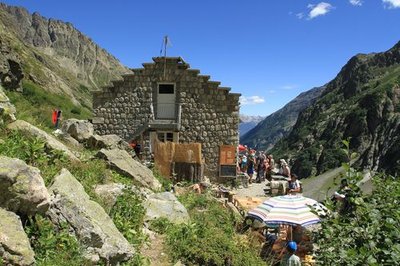
Arrivée au refuge des Bans - Jean-Philippe Telmon - PNE  Hut
HutLes Bans mountain Refuge
Perched on a rock, Les Bans mountain refuge offers a clear view of the Onde valley on one side and the cirque of high summits that surround the valley to the other side. It was made of dressed stones roughly fifty years ago and can sleep 22 people. It is very animated during the day as it welcomes walkers who have come to taste local specialities, but it regains its calm in the evening and offers a valuable lookout for observing ibex and chamois. You are sure to have an unforgettable evening in the end of the world atmosphere of this refuge thanks to the warm welcome from the wardens and the soup made in the solar oven.
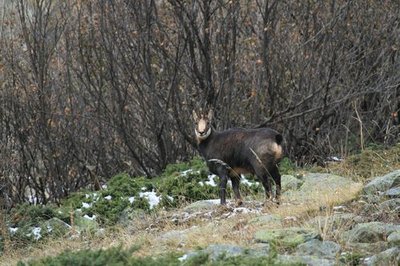
Chamois à proximité du refuge des Bans - Jean-Philippe Telmon - PNE  Fauna
FaunaChamois
In the summer, it is at the coolest times of the day that you can observe the chamois, busy grazing... When the sun heats up the valley, they prefer to sleep in the shade of the Green Alders unless there are some pockets of snow remaining, in the coolest areas. With very curved horns it’s the male, the Billy goat. With openly curved horns: it’s the female, the nanny goat. If the horns do not reach further than the ears: it is an esterlon or an eterle, a young animal in its second year of life... With horns just pointing through : it is a kid.
More information
Source

Report a problem or an error
If you have found an error on this page or if you have noticed any problems during your hike, please report them to us here:


